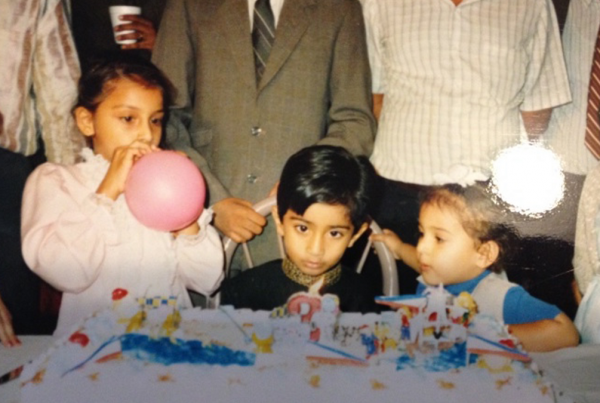My “friendtor” (friend + mentor) Drew Dudley had introduced Joann Lim of Big Picture Fine Focus to me simply as “someone you need to know.”
And so Joann and I began chatting about all things work/life balance around December of 2012. A few months later, over fish tacos and chopped chicken salad, she shared the following Buddhist proverb:
“When the student is ready, the teacher will appear.”
Sometimes you don’t know how dark it is until you turn the lights on. While new developments in my personal, professional and academic lives were quickly filling up my calendar and to-do list, an inverted list of excuses for neglected priorities was being generated simultaneously:
- “My week is packed, I can’t go to the gym.”
- “I have to eat out, I don’t have time to prepare my own meals.”
- “I can’t dedicate enough time to my startup right now.”
- “Family & friends have to wait, this project needs me.”
Across the table from me was someone who manifested concurrence -someone who was doing everything that she wanted to do, and seemed to have an infinite capacity for doing more. Until that moment, I had a preconceived notion of life coaches as ad-hoc solutions — people you hire after you’ve burnt out. I thought to myself, “What if Joann could help me stabilize my growth so that I avoid burning out altogether?”
Without hesitation, I enlisted myself as her student. It turned out to be one best decisions I ever made.Allow me to share with you the first exercise she subjected me to, which instantly expanded my capacity and completely reframed the way I view time: The 168-Hour Audit.
1) Map out how you currently spend your hours.
Open up a spreadsheet on Google Drive. Title it “168 Hour Audit: Currency Of Life.” Create 3 columns:
- Activity — Now list the following items under this heading: Sleep, Physical Fitness, Eating/Cooking/Groceries, Work/Career, Watching TV/Internet Surfing/Video Games, Miscellaneous (Errands, House Cleaning, etc.), Family/Friends, Self-Care (Shower, Getting Ready, Daily Routine, etc.), Quiet Time (Reflection, Meditation, Journaling, Prayer, etc.), Education and Commuting. Feel free to add any other categories not mentioned.
- # of Hours — Here, list the total estimated hours your spend per week doing each of the corresponding activities.
- % of time — Each cell should contain a calculation of the # of hours spent on specific activity, divided by the total weekly expenditure of hours, expressed as a percentage.
Begin listing how your time is currently spent each week.Your Total Weekly Expenditure should equal 168 hours and 100% of your allocated time. Now turn this data into a labelled pie chart so that you can visualize your week.
2) Map out how you WANT to spend your hours.
Repeat the previous step, but instead list how you WANT to spend your hours rather of how you actually spend them. This is where you get to envision your ideal week. Generously allocate more time to the things that you want to do, and scale back on the areas that are causing you stress.
3) Assess the disparities between your two spreads.
Chances are, there are incongruities between how you currently spend your time and how you want to spend your time. Ask yourself the following:
- What is taking up most of my time? Do I really want this to take up most of my time?
- What do I need to do, but am not allocating enough time towards?
- What do I want to do, but am not allocating enough time towards?
- Where are some areas that I am spending far more time than I should be?
4) Consolidate your time expenditure.
At this stage, after you’ve asked yourself the questions in the previous step, feel free to recalibrate how you want to spend your time. Now consider how you can reduce the amount of time spent in certain areas. Consider ways in which you can merge areas, especially areas that aren’t necessarily conducive to advancing your projects. I like to call this practice “converting downtime into uptime.” Consider the following:
- Can your commuting time double as your quiet time? Check out Audible’s selection of audio books.
- Need a spot? Perhaps your physical fitness time can merge with some family/friend time.
- Can you merge education time and self-care time? Try firing up a podcast during your morning routine.
Get creative with your consolidation.
5) Build a system to reclaim your time.
Fire open your calendar and start carving time. Block off time for the gym, time for reading, time for meditation, etc. Block off time for any of the areas of your week that you wish to reclaim. Make these time slots non-negotiable. Your schedule now works around these areas. You can no longer book meetings, or anything else in these slots. Now go into Asana or whatever project/task-managing app you’re using, and create recurring tasks intended on modifying your behaviour over the next 40 days.
“Remember The 40 Day Rule. Any new practice will feel foreign/stressful/hard for the first 40 days as you repattern.” — Robin Sharma
6) Track your progress.
I love Asana because of how easily it integrates with a multitude of apps. My account is currently tied to the following services:
- Instagantt — Create a Gantt chart, schedule tasks in a timeline, and set start dates and dependency lines.
- Harvest — The Harvest timer is built into the Asana task pane so you can track time for any task without leaving Asana.
- Flowbs — Use Flowbs to analyze performance, task completion, and overall progress of Asana projects and team members.
- Sprintbords — Simply connect your Asana project to a Sprintboard and share your one-page project status report.
I also use RescueTime to assess where I’m wasting my time online. (Usually/r/cringe and WORLDSTARHIPHOP).
Make the most of your 168 hours. Hit me up at hamza@hamzakhan.ca if you’re stuck at any part of the audit. Also consider enlisting the services of Joann Lim if you want to take your game to another level.
Now go reclaim your time!
—
This post was originally published on Medium.




